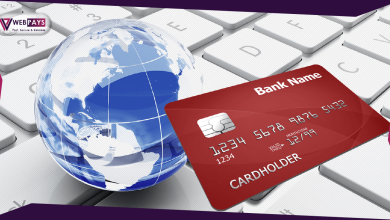
The advent of the internet and foreign banks have revolutionised how people live, work, and shop. One of the most significant changes has been the growth of e-commerce, which has transformed the retail industry. Over the past few years, e-commerce has grown at an astonishing rate with online sales expected to reach $6.5 trillion by 2023. This growth has been driven by advancements in technology, such as mobile devices and online banking. Which have made it easier for consumers to shop online. In this blog, we’ll explore the growth of e-commerce and how it has impacted businesses and consumers worldwide.
What is E-commerce?
E-commerce refers to the buying and selling of goods and services over the internet. It allows businesses to reach a broader audience. Reduces business costs, and enables consumers to shop from the comfort of their homes. E-commerce can be conducted through various channels, including online marketplaces, social media platforms, and company websites.
The Growth of E-commerce
E-commerce has been growing steadily since the early 2000s, but it experienced a significant surge during the COVID-19 pandemic. With lockdowns and restrictions in place, more consumers turned to online shopping, resulting in an unprecedented rise in e-commerce sales. According to a report by eMarketer, global e-commerce sales reached $4.28 trillion in 2020, up 27.6% from the previous year. Several factors have contributed to the growth of e-commerce, including:
Convenience
Online shopping offers consumers the convenience of shopping anywhere at any time. With e-commerce, customers can avoid long lines, crowded stores, and the hassle of traveling to physical locations. This convenience has made online shopping a popular choice.
Increased Connectivity
The widespread availability of the internet and mobile devices has made it easier for consumers to shop online. The growth of social media and online marketplaces has also provided more options for consumers to purchase products and services.
Improved Logistics
Advances in logistics have made it easier and more cost-effective for businesses to ship products to customers worldwide. Improved tracking systems and faster delivery times have also increased customer satisfaction and loyalty.
Competitive Pricing
E-commerce has made it easier for businesses to compare prices and offers competitive pricing to consumers. With more transparency and access to information, consumers can make more informed purchasing decisions. Which has forced businesses to offer more competitive pricing.
Impact on Businesses
E-commerce has had a significant impact on businesses worldwide. It has provided smaller businesses with a level playing field to compete with larger corporations. It has also reduced business expenditure, as companies no longer need physical stores and can operate from a warehouse or distribution centre.
The impact of retail banking on e-commerce
Retail banking and e-commerce are rapidly evolving industries that have undergone significant transformations in recent years. The impact of e-commerce on retail banking has been substantial. And it has fundamentally changed how banks operate and offers services to their customers. Here is the effect of e-commerce on retail banking.
Online payment
With e-commerce, consumers can purchase goods and services. Online using various payment methods, such as credit cards, PayPal, or other digital wallets. This has led to a decrease in the use of physical cash, checks, and even debit cards. which were once the primary payment methods for retail banking. This has also made it more convenient for customers to make purchases. On the go without having to carry cash or credit cards.
Online banking
Online banking allows customers to access their bank accounts, check balances. Make transfers, and pay bills from the comfort of their homes. These made banking more convenient and accessible for customers. Especially those who may not have time to visit a physical bank branch during business hours. Online banking has also led to the growth of digital-only banks. These banks, also known as neo banks, are fully digital and operate entirely online. They offer many of the same services as traditional banks. Such as checking accounts and savings accounts but without physical branches.
Increase in fraud and cybersecurity
With more transactions taking place online, there is a greater risk of fraud and cyber attacks, which can lead to financial losses for consumers and banks. To mitigate these risks, retail banks have had to invest in new technologies and security measures to protect their customers’ data and financial information. These include biometric authentication, such as fingerprint scanning and facial recognition, to verify the identity of customers and prevent unauthorised access to accounts.
In conclusion The impact of e-commerce on retail banks has been significant, and it has forced them to adapt to the changing needs of consumers. With the rise of online payments and digital banking, retail banks have had to offer new services to stay competitive. Additionally, companies must




